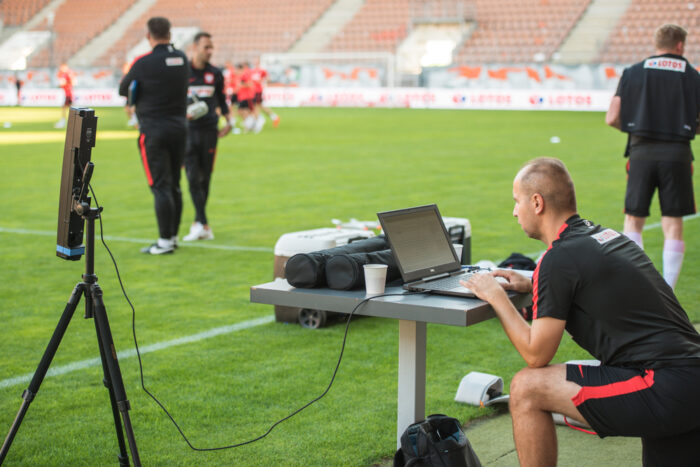Many people love sports betting, as it gives them a feeling of safe gambling. The bettors usually invest a small amount of money in their favorite match or player, hoping for the best possible outcome. It seems easy, but the serious bettors know it’s a challenge to come up with the right tip, choose the right amount of money to invest, and then wait for the results (usually impatiently).
These days, many try to use technology to help these people see the data patterns and ease the whole betting experience for them. Following the results through services like MrMega and predicting the further outcomes is such an excellent start, but we all know sports betting can be a lot more than that. There has been a surge in the amount of data available for sports enthusiasts to analyze and make more informed decisions when placing bets.
That means people can focus on the available information and use it to learn how to predict the outcomes precisely. Even though there is no particular way to get all these things right, knowing fundamental data analysis will surely give you a nice advantage in sports betting.
In this article, we will explore how to analyze sports data to give you an edge in betting.
Step 1: Identify the key performance indicators

Source: seleritysas.com
The term KPI is known in many industries, and in most cases it means the same – taking the relevant data and determining the performance indicators. Based on that, you can compare different data and outcomes and learn if there is any pattern in the performance.
Surely, key performance indicators aren’t the same in every game. In football, KPIs can be touchdowns, yards per carry, completion percentage, etc. It’s not the same for basketball, where KPIs are points in one match, rebounds per game, field goal percentage, and so on.
Take any sport and analyze what counts as a result. Surely, it’s not always the hit or goal.
Sometimes many data indicators contribute to the final result. Let’s say you want to bet on soccer or European football. Of course, it’s different from American football, which means you measure different indicators, like how many penalties per game, how many goals per season the team has, or how a particular player performs during one specific match. See, there are many different things to analyze.
Step 2: Gather all the needed data
This step takes plenty of time because many bettors decide to analyze historical data on particular sports events to get a nicer insight into the KPIs.
Luckily, we have internet access today, so most data is easily accessible. Can you imagine going to a library and analyzing the data page by page? Surely it’s not impossible to do that, but the standard internet research works perfectly fine on this one.
You can use this data to create charts, graphs, and other visual aids to help you better understand how teams or athletes perform in certain situations.
Step 3: Use math to identify eventual patterns

Source: ecvitoria.com.br
Now you are deep into analyzing sports data, trying to figure out if there is any trend you need to be careful of. And yes, if you were into math in high school, you’ll get the whole thing right. But it doesn’t mean math haters will perform worse. The statistical methods we use are trying to connect the trends and correlations, as well as regression analysis.
As a bettor, you’ll have to understand how one indicator affects another and identify the eventual relationship between them. That way, you build a strong foundation for your betting methods.
We suggest following the trends too. And we don’t mean the modern things around us. In math and statistics, a trend refers to improving or declining performance over time, according to the KPIs.
Step 4: Try to predict the event outcome
We don’t say you need a deck of tarot cards or a crystal ball to do this. On the contrary, you can use the collected data and determined correlations to predict the result precisely. You can even rely on machine learning algorithms, especially if you have so much data to analyze.
Machine learning algorithms analyze large amounts of historical data to identify patterns and trends that can be used to make predictions about future events. And yes, that means you can train a machine to predict a specific outcome based on previous events. But be careful, this doesn’t mean the predictions are always true.
Step 5: Make wise decisions

Source: datapopalliance.org
Now you’re completely informed on what to and how to bet. You probably took enough time to analyze the data and predict the patterns, so we are sure you’re ready for more successful bets.
As you can see, data analysis plays a huge part in sports betting, and it’s up to you to find what method works best for you.
Step 6: When nothing works – try to get lucky
As we said, not every data analysis method is precise enough. It’s just an interpretation of the patterns according to previous events. Sometimes you’ll get lucky, but sometimes it won’t work that easily.
In these cases, we suggest you test your luck and see how you perform without analyzing anything in advance. Many bettors swear this method works better compared to any other mathematical calculation.
It won’t hurt to try – who knows, maybe that’s your lucky move to win some money.
Final thoughts
Even though it seems like a lot of jobs and learning to do, sports betting relies completely on math, logic, and history. Still, it’s an important step in giving you an edge in betting.
So, now you know you need to identify the key performance indicators, gather previous data, analyze it, and even feed the machine learning algorithms, so you can make better decisions. All these activities will surely help you increase your chances of a successful bet.
Or maybe you need more luck to do that?
No matter how you do it, remember to always gamble responsibly, even when it’s a small amount of money for a sports betting ticket.
